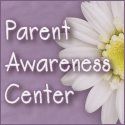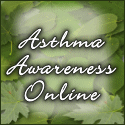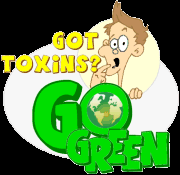The CDC (Centers for Disease Control and Prevention) answers questions about Insect Repellents and DEET.
Q. Which mosquito repellent works the best?
A. The most effective repellents contain DEET (N,N-diethyl-m-toluamide), which is an ingredient used to repel pests like mosquitoes and ticks. DEET has been tested against a variety of biting insects and has been shown to be very effective. The more DEET a repellent contains the longer time it can protect you from mosquito bites. A higher percentage of DEET in a repellent does not mean that your protection is better—just that it will last longer. DEET concentrations higher than 50% do not increase the length of protection.
Q. Is DEET safe?
A. Yes, products containing DEET are very safe when used according to the directions. The regulation of substances such as DEET is determined by the U.S. Environmental Protection Agency (EPA). Because DEET is so widely used, a great deal of testing has been done. When manufacturers seek registration with the EPA, laboratory testing regarding both short-term and long-term health effects must be carried out. Over the long history of DEET use, very few confirmed incidents of toxic reactions to DEET have occurred when the product is used properly.
Q. How does the percentage of DEET in a product relate to the amount of protection it gives?
A. Based on a 2002 study:
A product containing 23.8% DEET provided an average of 5 hours of protection from mosquito bites.
A product containing 20% DEET provided almost 4 hours of protection
A product with 6.65% DEET provided almost 2 hours of protection
Products with 4.75% DEET and 2% soybean oil were both able to provide roughly 1 and a half hour of protection.
Q. What are some general considerations to remember in order to use products containing DEET safely?
A. Always follow the recommendations appearing on the product label.
Use enough repellent to cover exposed skin or clothing. Don't apply repellent to skin that is under clothing. Heavy application is not necessary to achieve protection.
Do not apply repellent to cuts, wounds, or irritated skin.
After returning indoors, wash treated skin with soap and water.
Do not spray aerosol or pump products in enclosed areas.
Do not apply aerosol or pump products directly to your face. Spray your hands and then rub them carefully over the face, avoiding eyes and mouth.
Q. How should products containing DEET be used on children?
A. No definitive studies exist in the scientific literature about what concentration of DEET is safe for children. No serious illness has been linked to the use of DEET in children when used according the product recommendations. The American Academy of Pediatrics (AAP) Committee on Environmental Health has recently updated their recommendation for use of DEET products on children, citing: "Insect repellents containing DEET (N,N-diethyl-m-toluamide, also known as N,N-diethyl-3-methylbenzamide) with a concentration of 10% appear to be as safe as products with a concentration of 30% when used according to the directions on the product labels."
The AAP and other experts suggest that it is acceptable to apply repellent with low concentrations of DEET to infants over 2 months old. Other guidelines cite that it is acceptable to use repellents containing DEET on children over 2 years of age.
Repellent products that do not contain DEET are not likely to offer the same degree of protection from mosquito bites as products containing DEET. Non-DEET repellents have not necessarily been as thoroughly studied as DEET, and may not be safer for use on children.
Parents should choose the type and concentration of repellent to be used by taking into account the amount of time that a child will be outdoors, exposure to mosquitoes, and the risk of mosquito-transmitted disease in the area. Persons who are concerned about using DEET or other products on children may wish to consult their health care provider for advice. The National Pesticide Information Center (NPIC) can also provide information through a toll-free number, 1-800-858-7378 or npic.orst.edu.
Always follow the recommendations appearing on the product label when using repellent.
When using repellent on a child, apply it to your own hands and then rub them on your child. Avoid children's eyes and mouth and use it sparingly around their ears.
Do not apply repellent to children's hands. (Children may tend to put their hands in their mouths.)
Do not allow young children to apply insect repellent to themselves; have an adult do it for them. Keep repellents out of reach of children.
Do not apply repellent to skin under clothing. If repellent is applied to clothing, wash treated clothing before wearing again.
Using repellents on the skin is not the only way to avoid mosquito bites. Children and adults can wear clothing with long pants and long sleeves while outdoors. DEET or other repellents such as permethrin can also be applied to clothing (don’t use permethrin on skin), as mosquitoes may bite through thin fabric. Mosquito netting can be used over infant carriers. Finally, it may be possible to reduce the number of mosquitoes in the area by getting rid of containers with standing water that provide breeding places for the mosquitoes.
Q. Is DEET safe for pregnant or nursing women?
A. There are no reported adverse events following use of repellents containing DEET in pregnant or breastfeeding women.
Q. Can I use an insect repellent containing DEET and a product containing sunscreen at the same time?
A. Yes. People can and should use both sunscreen and DEET when they are outdoors to protect their health. Follow the instructions on the package for proper application of each product. Apply sunscreen first, followed by repellent containing DEET.
To protect from sun exposure and insect bites, you can also wear long sleeves and long pants. You can also apply insect repellent containing DEET or permethrin to your clothing, rather than directly to your skin.
Q. Should I use a combination sunscreen/DEET-based insect repellent?
A. Because the instructions for safe use of DEET and safe use of sunscreen are different, CDC does not recommend using products that combine DEET with sunscreen
Subscribe to:
Post Comments (Atom)



No comments:
Post a Comment